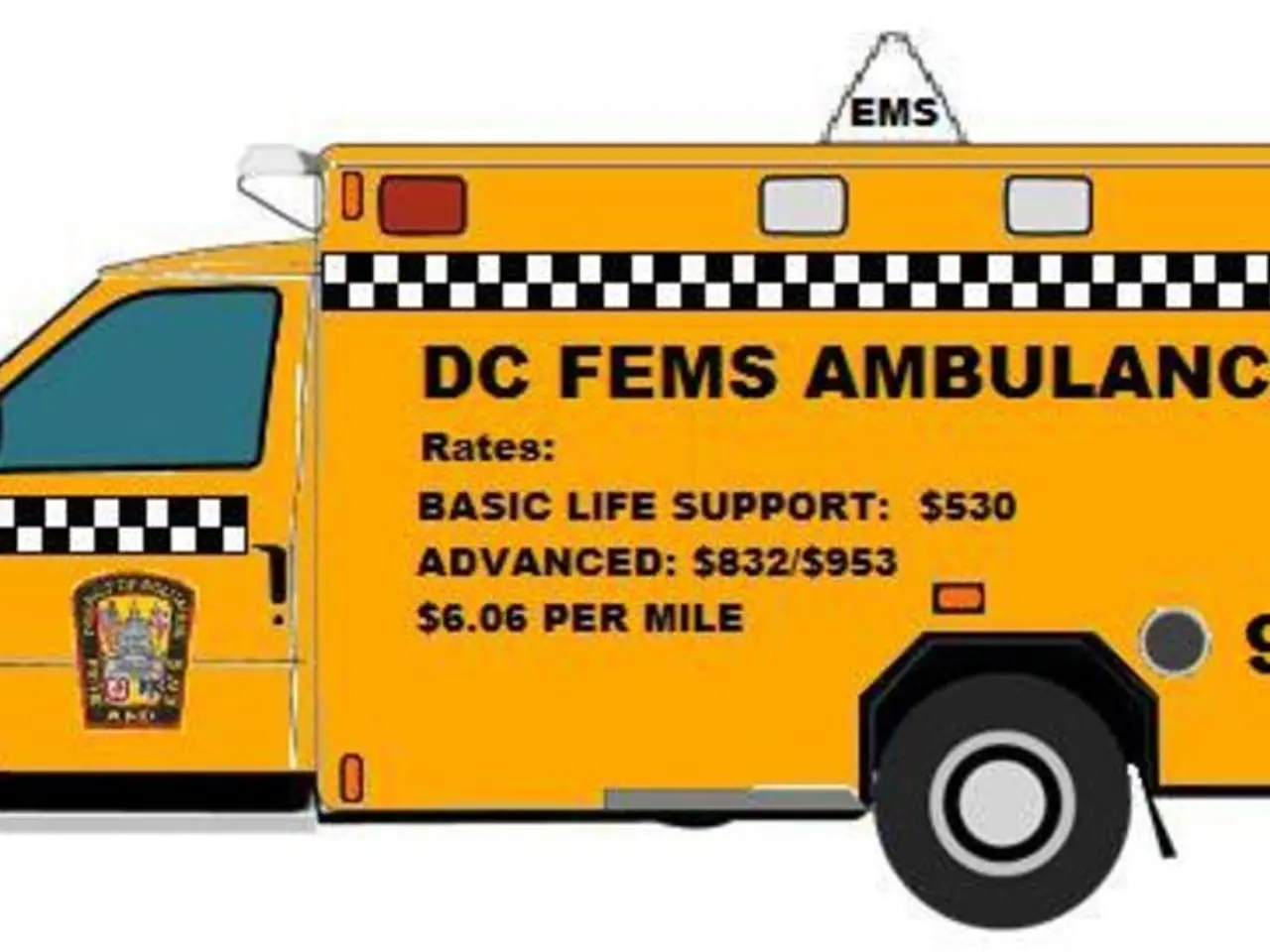Recognizing Signs of Heart Failure: A Life-Saving Knowledge
In the event of a cardiac arrest, quick action by first aiders or laypeople can significantly increase survival chances. Prof. Bernd Böttiger, the Federal Physician of the German Red Cross (DRK) and Chairman of the German Resuscitation Council, emphasizes the importance of this role, as they can bridge the time until the emergency services arrive.
The procedure for a cardiac arrest as a first aider is straightforward: Check, Call, Compress.
First, check the person's response. If they are unresponsive and show no signs of normal breathing, call the emergency number 112 immediately. If you're unsure about the person's breathing, it's always better to err on the side of caution and call for help.
While waiting for the emergency services, start performing chest compressions. Place one hand on the center of the chest, the other on top, and press down with straight arms, with the shoulders directly above the pressure point, about five to six centimeters deep. Remember to press down twice per second, maintaining a frequency of about 100–120 compressions per minute.
A common technique to keep the compression rate consistent is to remember a song. Songs like "Stayin' Alive" by the Bee Gees, Radetzky March by Strauss, or "Breathless" by Helene Fischer can help you maintain the correct rhythm.
During the compression, check the person's response every ten seconds. Speak loudly to them and gently shake their shoulders to see if they react. If there's another person with you, switch with them after about two minutes of chest compressions.
Not pressing hard enough during chest compressions or not relieving pressure adequately afterwards can be a mistake during CPR. It's crucial to ensure that the compressions are deep and consistent.
Prof. Böttiger advocates for mandatory first aid training in schools nationwide, emphasizing the importance of equipping people with the knowledge and skills to respond effectively in an emergency.
Most cardiac arrest emergencies occur at home, so it's essential to be prepared and know what to do. By following the Check, Call, Compress protocol, you can help save a life until professional help arrives.
Read also:
- Peptide YY (PYY): Exploring its Role in Appetite Suppression, Intestinal Health, and Cognitive Links
- Toddler Health: Rotavirus Signs, Origins, and Potential Complications
- Digestive issues and heart discomfort: Root causes and associated health conditions
- House Infernos: Deadly Hazards Surpassing the Flames








